 W
WAstragalus sarcocolla is a historical shrub or tree from Persia, identified with a species of Astragalus (Papilionaceae), also denoting its balsam.
 W
WBalm of Gilead was a rare perfume used medicinally, that was mentioned in the Bible, and named for the region of Gilead, where it was produced. The expression stems from William Tyndale's language in the King James Bible of 1611, and has come to signify a universal cure in figurative speech. The tree or shrub producing the balm is commonly identified as Commiphora gileadensis. Some botanical scholars have concluded that the actual source was a terebinth tree in the genus Pistacia.
 W
WBat bombs were an experimental World War II weapon developed by the United States. The bomb consisted of a bomb-shaped casing with over a thousand compartments, each containing a hibernating Mexican free-tailed bat with a small, timed incendiary bomb attached. Dropped from a bomber at dawn, the casings would deploy a parachute in mid-flight and open to release the bats, which would then disperse and roost in eaves and attics in a 20–40-mile radius (32–64 km). The incendiaries, which were set on timers, would then ignite and start fires in inaccessible places in the largely wood and paper constructions of the Japanese cities that were the weapon's intended target. The United States Navy took control in August 1943, using the codename Project X-Ray.
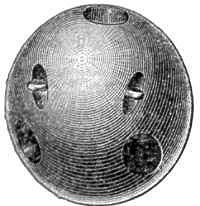 W
WA carcass was an early form of incendiary bomb or shell, intended to set targets on fire. It comprised an external casing, usually of cast iron, filled with a highly flammable mixture, and having three to five holes through which the burning filling could blaze outward. Carcasses were shot from howitzers, mortars, and other cannons to set fire to buildings and defences; on impact, the shell shattered, spreading its incendiary filling around the target. Congreve rockets were also sometimes fitted with carcass heads.
 W
WEarly thermal weapons were used in warfare during the classical and medieval periods using heat or burning action to destroy or damage enemy personnel, fortifications or territories.
 W
WA Fu-Go , or fire balloon , was a weapon launched by Japan during World War II. A hydrogen balloon with a load varying from a 33 lb (15 kg) antipersonnel bomb to one 26-pound (12 kg) incendiary bomb and four 11 lb (5.0 kg) incendiary devices attached, it was designed as a cheap weapon intended to make use of the jet stream over the Pacific Ocean and drop bombs on American cities, forests, and farmland. Canada and Mexico reported fire balloon sightings as well.
 W
WFirebombing is a bombing technique designed to damage a target, generally an urban area, through the use of fire, caused by incendiary devices, rather than from the blast effect of large bombs.
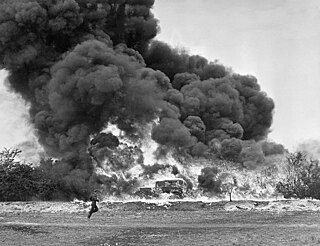 W
WA flame fougasse is a type of mine or improvised explosive device which uses an explosive charge to project burning liquid onto a target. The flame fougasse was developed by the Petroleum Warfare Department in Britain as an anti-tank weapon during the invasion crisis of 1940. During that period, about 50,000 flame fougasse barrels were deployed in some 7,000 batteries, mostly in southern England and a little later at 2,000 sites in Scotland. Although never used in combat in Britain, the design saw action later in Greece.
 W
WA flamethrower is a ranged incendiary device designed to project a controllable jet of fire. First deployed by the Byzantine Empire in the 7th century AD, flamethrowers saw use in modern times during World War I, and more widely in World War II as a tactical siege weapon against fortifications.
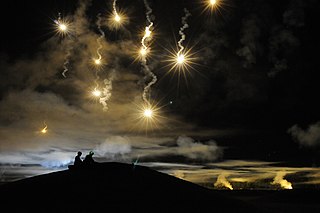 W
WA flare, also sometimes called a fusée, is a type of pyrotechnic that produces a bright light or intense heat without an explosion. Flares are used for distress signaling, illumination, or defensive countermeasures in civilian and military applications. Flares may be ground pyrotechnics, projectile pyrotechnics, or parachute-suspended to provide maximum illumination time over a large area. Projectile pyrotechnics may be dropped from aircraft, fired from rocket or artillery, or deployed by flare guns or handheld percussive tubes.
 W
WA fougasse is an improvised mortar constructed by making a hollow in the ground or rock and filling it with explosives and projectiles. The fougasse was used by Samuel Zimmermann at Augsburg in the sixteenth century, referred to by Vauban in the seventeenth century, and well known to military engineers by the mid-eighteenth century. This technique was used in several European wars, the American Revolution, and the American Civil War. The term is still used to describe such devices.
 W
WGerman Village was the nickname for a range of mock houses constructed in 1943 by the U.S. Army in the Dugway Proving Ground in Utah, roughly 85 miles (137 km) southwest of Salt Lake City, in order to conduct experiments used for the bombing of Nazi Germany.
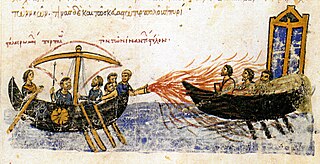 W
WGreek fire was an incendiary weapon used by the Byzantine Empire beginning c. 672. Used to set fire to enemy ships, it consisted of a combustible compound emitted by a flame-throwing weapon. Some historians believe it could be ignited on contact with water, and was probably based on naphtha and quicklime. The Byzantines typically used it in naval battles to great effect, as it could supposedly continue burning while floating on water. The technological advantage it provided was responsible for many key Byzantine military victories, most notably the salvation of Constantinople from the first and second Arab sieges, thus securing the Empire's survival.
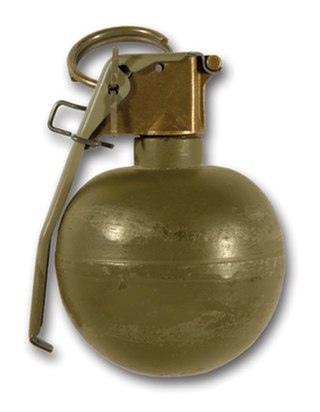 W
WA grenade is an explosive weapon typically thrown by hand, but can also refer to a shell shot out by a rifle or a grenade launcher. A modern hand grenade generally consists of an explosive charge ("filler"), a detonator mechanism, an internal striker to trigger the detonator, and a safety lever secured by a linchpin. The user pulls the safety pin before throwing, and once thrown the safety lever gets released, allowing the striker to trigger a primer that ignites a fuze, which burns down to the detonator and explodes the main charge.
 W
WIncendiary ammunition is a type of firearm ammunition containing a compound that burns rapidly and causes fires.
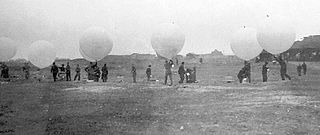 W
WAn incendiary balloon is a balloon inflated with a lighter-than-air gas such as hot air, hydrogen, or helium, that has a bomb, incendiary device, or Molotov cocktail attached. The balloon is carried by the prevailing winds to the target area, where it falls or releases its payload.
 W
WIncendiary weapons, incendiary devices, incendiary munitions, or incendiary bombs are weapons designed to start fires or destroy sensitive equipment using fire, that use materials such as napalm, thermite, magnesium powder, chlorine trifluoride, or white phosphorus. Though colloquially often known as bombs, they are not explosives but in fact are designed to slow the process of chemical reactions and use ignition rather than detonation to start or maintain the reaction. Napalm for example, is petroleum especially thickened with certain chemicals into a 'gel' to slow, but not stop, combustion, releasing energy over a longer time than an explosive device. In the case of napalm, the gel adheres to surfaces and resists suppression.
 W
WAn Incendiary kite(also Firebomb kite, flaming kite, Fire Kite) is a kite with a bomb, incendiary device, or Molotov cocktail attached.
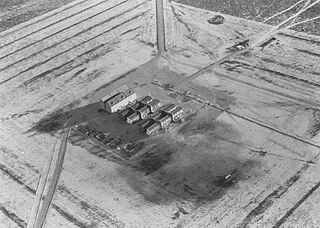 W
WJapanese Village was the nickname for a range of houses constructed in 1943 by the U.S. Army in the Dugway Proving Ground in Utah, roughly 100 kilometers (62 mi) southwest of Salt Lake City.
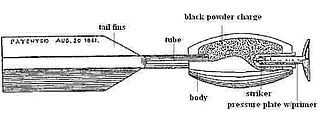 W
WThe Ketchum Hand Grenade was a type of grenade used in the American Civil War. It was patented on August 20, 1861 by William F. Ketchum, a mayor of Buffalo, N.Y., and was partially adopted in the Union Army. They were used in battles such as Vicksburg and Petersburg.
 W
WThe M69 incendiary bomblet was used in air raids on Japan and China during World War II, including the firebombing of Tokyo in 1945. It was created by the Standard Oil Development Company, whose work was funded by the Office of Scientific Research and Development. They were nicknamed "Tokyo calling cards". The M69 was a plain steel pipe with a hexagonal cross section 3 inches (7.6 cm) in diameter and 20 inches (51 cm) long. It weighed about 6 pounds (2.7 kg).
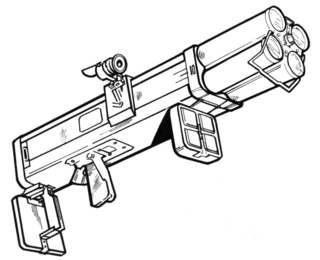 W
WThe M202 FLASH is an American rocket launcher, designed to replace the World War II–vintage flamethrowers that remained the military's standard incendiary devices well into the 1960s and 1970s. The XM202 prototype launcher was tested in the Vietnam War, as part of the XM191 system.
 W
WThe Mark 77 bomb (MK-77) is a United States 750-pound (340 kg) air-dropped incendiary bomb carrying 110 U.S. gallons of a fuel gel mix which is the direct successor to napalm.
 W
WThe RRAB-3, nicknamed the Molotov bread basket, was a Soviet-made droppable bomb dispenser that combined a large high-explosive charge with a cluster of incendiary bombs. It was used against the cities of Finland during the Winter War of 1939–1940. The bomb consisted of a cylinder 2.25 metres (7.4 ft) long and 0.9 metres (3.0 ft) in diameter.
 W
WA Molotov cocktail, also known as a petrol bomb, gasoline bomb, bottle bomb, poor man's grenade, fire bomb, fire bottle or just Molotov, sometimes shortened as Molly, is a generic name used for a variety of bottle-based improvised incendiary weapons.
 W
WNapalm is an incendiary mixture of a gelling agent and a volatile petrochemical. The name is a portmanteau of two of the constituents of the original thickening and gelling agents: co-precipitated aluminium salts of naphthenic acid and palmitic acid. Napalm B is the more modern version of napalm and, although distinctly different in its chemical composition, is often referred to simply as "napalm".
 W
WOperation Outward was a British World War II program to attack Germany by means of free-flying balloons. It made use of cheap, simple balloons filled with hydrogen. They carried either a trailing steel wire intended to damage high voltage power lines by producing a short circuit, or incendiary devices that were intended to start fires in fields, forests and heathland.
 W
WSanshikidan was a form of ammunition: a World War II-era combined shrapnel and incendiary anti-aircraft round used by the Imperial Japanese Navy. The type of layered construction of the warheads were generically referred to as Beehive rounds. The shells were intended to put up a barrage of flame that any aircraft attempting to attack would have to navigate through. However, U.S. pilots considered these shells to be more of a pyrotechnics display than a competent anti-aircraft weapon.
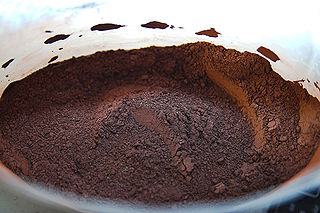 W
WThermite is a pyrotechnic composition of metal powder and metal oxide. When ignited by heat or chemical reaction, thermite undergoes an exothermic reduction-oxidation (redox) reaction. Most varieties are not explosive, but can create brief bursts of heat and high temperature in a small area. Its form of action is similar to that of other fuel-oxidizer mixtures, such as black powder.
 W
WTriethylaluminium is one of the simplest examples of an organoaluminium compound. Despite its name it has the formula Al2(C2H5)6 (abbreviated as Al2Et6 or TEA), as it exists as a dimer. This colorless liquid is pyrophoric. It is an industrially important compound, closely related to trimethylaluminium.
 W
WWhite phosphorus munitions are weapons which use one of the common allotropes of the chemical element phosphorus. White phosphorus is used in smoke, illumination, and incendiary munitions, and is commonly the burning element of tracer ammunition. Other common names include WP and the slang term "Willie Pete" or "Willie Peter" derived from William Peter, the World War II phonetic alphabet for "WP", which is still sometimes used in military jargon. White phosphorus is pyrophoric, burns fiercely, and can ignite cloth, fuel, ammunition, and other combustibles.